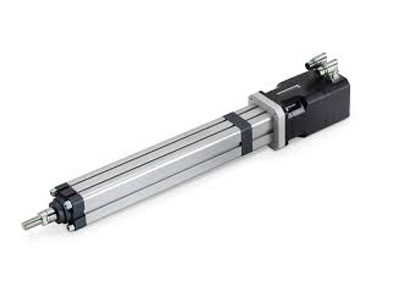How To Calculate Cfm Of A Pneumatic Cylinder?
Key Takeaway
To calculate the CFM (Cubic Feet per Minute) of a pneumatic cylinder, use the formula:
CFM = (A × S × C) / 1728
Here, A is the piston area in square inches, S is the stroke length in inches, and C is the number of cycles per minute. The result is divided by 1728 to convert cubic inches to cubic feet.
This calculation helps determine the airflow volume required to operate the cylinder effectively. Knowing the CFM is essential for selecting the right air compressor and ensuring the system performs efficiently. By considering the bore size (for piston area), stroke length, and operating speed, you can precisely estimate the pneumatic cylinder’s airflow needs. Proper calculation prevents performance issues and ensures reliable operation in your pneumatic system.
Understanding CFM and Its Importance in Pneumatic Systems
CFM measures the volume of air a pneumatic cylinder consumes over time. It reflects how much compressed air the system requires to operate effectively. Think of it as the fuel gauge for your cylinder—if the CFM is too low, the system underperforms; if it’s too high, resources are wasted.
Understanding CFM is critical because it directly impacts energy efficiency and system functionality. It helps engineers size compressors correctly, maintain consistent actuator speeds, and reduce operational costs. Additionally, accurate CFM calculations prevent unnecessary downtime by ensuring the system meets its airflow demands.
For instance, if a production line relies on pneumatic cylinders to drive packaging or assembly equipment, an insufficient CFM supply can disrupt operations. By calculating and monitoring CFM accurately, you keep your system running smoothly.

Key Factors Affecting CFM Calculation for Pneumatic Cylinders
Several factors influence CFM requirements for pneumatic cylinders. The most important include bore diameter, stroke length, cycle rate, and air pressure. Each of these variables plays a unique role in determining how much air the cylinder consumes during operation.
Bore Diameter: Larger bore sizes require more air to fill the cylinder, increasing the CFM requirement.
Stroke Length: The longer the stroke, the more air is needed to extend and retract the piston.
Cycle Rate: Faster cycle rates demand higher airflow to maintain consistent motion.
Air Pressure: Operating at higher pressures reduces the volume of air required for the same force, affecting CFM calculations.
Environmental conditions like temperature and humidity also play a role. Hot, humid air is less dense, which means compressors need to work harder to deliver the same CFM. These variables should be factored into your calculations to ensure accuracy.
Taking all these factors into account helps engineers design pneumatic systems tailored to specific operational needs, avoiding energy waste and inefficiencies.
Step-by-Step Guide to Calculating CFM
Calculating CFM for a pneumatic cylinder may seem technical, but it’s straightforward when broken into steps:
Determine the Bore Area: Use the formula:
= ×(Bore Diameter/2)²
For example, a cylinder with a 4-inch bore has an area of approximately 12.57 square inches.
Measure the Stroke Length: Identify the full extension length of the piston in inches.
Multiply by Cycle Rate: Determine how many cycles the cylinder completes per minute.
Account for Compression Ratio: Adjust for the operating pressure using this formula:
CFM = ( × × )/1728×14.7/Operating Pressure + 14.7
Where:
= Bore Area (square inches)
= Stroke Length (inches)
= Cycles per Minute
This calculation ensures that you account for the compressed air’s density and pressure, providing an accurate measurement of airflow requirements. Always double-check your inputs to avoid miscalculations.
Tools and Formulas for Accurate CFM Measurement
Using the right tools and formulas can make calculating CFM simpler and more reliable. Tools like flow meters, pressure gauges, and specialized pneumatic calculators are invaluable for precise measurements.
A flow meter installed in the air supply line measures real-time airflow, giving immediate feedback on the system’s CFM. Similarly, pressure gauges ensure the operating pressure matches the calculation parameters.
Pre-built CFM calculators or software can also simplify the process, especially when dealing with complex systems. These tools typically require input values for bore size, stroke length, cycle rate, and pressure, generating accurate results instantly.
For manual calculations, always refer to standard formulas and double-check your values. Ensuring consistent units across all inputs (e.g., inches, psi, cycles per minute) is crucial for accurate results. With the right approach, determining CFM becomes a straightforward task, empowering engineers to optimize pneumatic systems effectively.
Tips for Optimizing CFM in Pneumatic Cylinder Operations
Optimizing CFM goes beyond calculation—it’s about ensuring the pneumatic system operates efficiently and reliably. Here are some practical tips:
Regular Maintenance: Clean and inspect cylinders and air supply lines to prevent blockages and leaks that can alter CFM.
Minimize Air Leaks: Use high-quality fittings and sealants to maintain consistent airflow. Even small leaks can significantly impact efficiency.
Use Pressure Regulators: These devices help maintain optimal pressure levels, preventing excess air consumption.
Right-Sized Components: Ensure cylinders, compressors, and other system components match the required CFM. Over- or under-sizing can lead to inefficiencies.
Monitor System Performance: Install sensors to track airflow and pressure in real-time, enabling adjustments as needed.
By following these practices, you can reduce energy consumption, extend the lifespan of system components, and maintain optimal performance.
Conclusion
Calculating CFM for a pneumatic cylinder is a fundamental step in designing and maintaining efficient pneumatic systems. By understanding factors like bore size, stroke length, and cycle rate, and using accurate tools and formulas, engineers can ensure their systems operate smoothly. Proper CFM management not only enhances efficiency but also minimizes costs and extends the lifespan of equipment. A well-calculated CFM ensures reliability, making it a critical aspect of any pneumatic setup.

